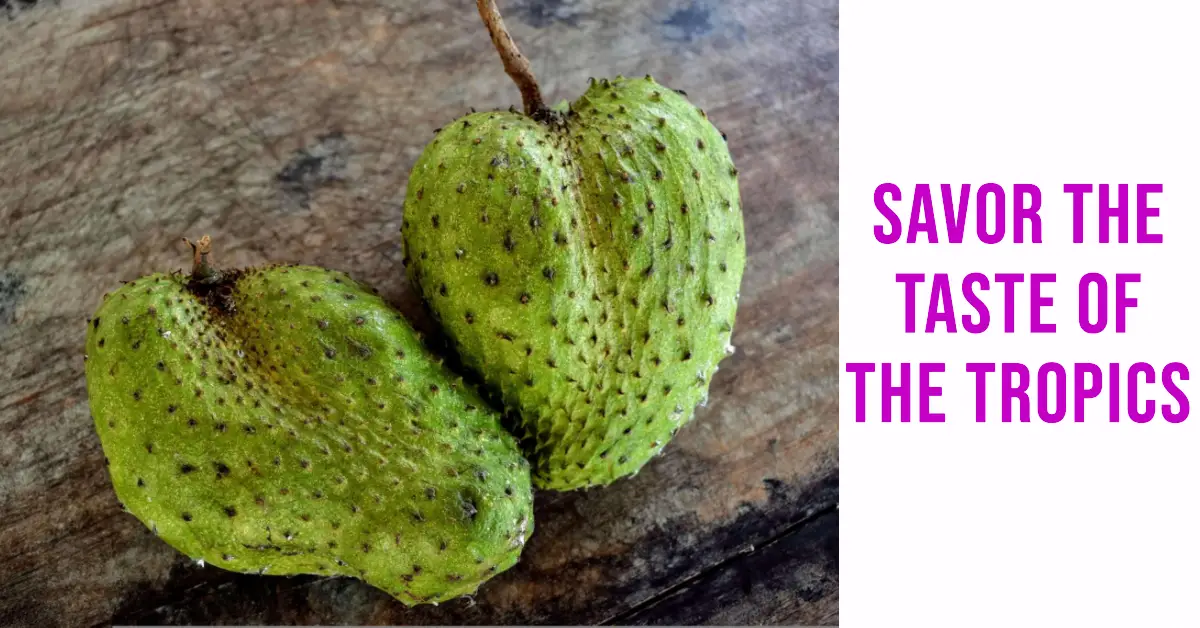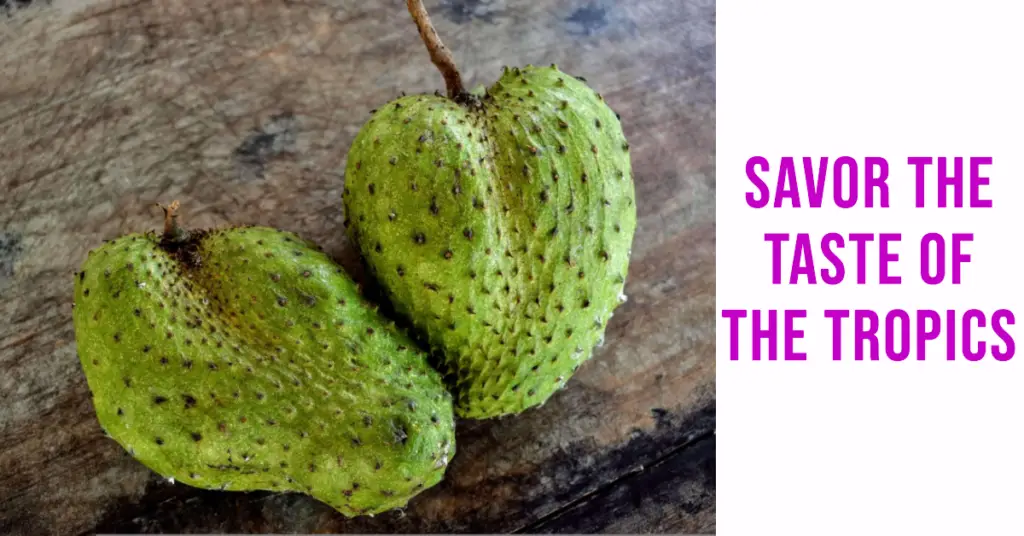
What Does Soursop Taste Like?
Soursop, also known as graviola, guanabana, or guyabano, is a tropical fruit with a unique and delicious flavor. It is often described as a combination of strawberry, pineapple, and citrus, with a slightly sweet and sour taste. The texture of soursop is creamy and custard-like, making it a popular ingredient in smoothies, juices, and ice cream.

Here are some more specific descriptions of soursop’s taste:
- Fruity: Soursop has a strong, fruity flavor that is reminiscent of strawberries, pineapple, and other tropical fruits.
- Sweet and sour: Soursop has a slightly sweet and sour taste, with the sourness being more pronounced in ripe fruit.
- Creamy: Soursop has a creamy and custard-like texture, which makes it a popular ingredient in smoothies, juices, and ice cream.
- Floral: Soursop also has a subtle floral aroma, which adds to its unique flavor profile.
Nutritional value of soursop
Soursop is a good source of vitamins, minerals, and antioxidants. It is particularly high in vitamin C, potassium, and fiber. Soursop also contains a number of unique compounds that have been shown to have a variety of health benefits.
Health benefits of soursop
Soursop has been shown to offer a number of health benefits, including:
- Boosting the immune system: Soursop is a good source of vitamin C and other antioxidants, which can help to boost the immune system and protect the body from infection.
- Reducing inflammation: Soursop has anti-inflammatory properties, which can help to reduce inflammation throughout the body. Inflammation is a major risk factor for many chronic diseases, such as heart disease, cancer, and arthritis.
- Improving digestion: Soursop is a good source of fiber, which can help to improve digestion and prevent constipation.
- Regulating blood sugar levels: Soursop may help to regulate blood sugar levels and improve insulin sensitivity. This can be beneficial for people with diabetes or prediabetes.
- Lowering cholesterol levels: Soursop may help to lower cholesterol levels and reduce the risk of heart disease.
- Protecting against cancer: Soursop contains compounds that have been shown to have anti-cancer properties. For example, a study published in the journal Cancer Letters found that soursop leaf extract was able to kill breast cancer cells.
- Relieving pain: Soursop has pain-relieving properties, which can be helpful for people with conditions such as arthritis, headaches, and menstrual cramps.
- Improving skin health: Soursop is rich in antioxidants, which can help to protect the skin from damage and improve its overall health.
- Boosting energy levels: Soursop may help to boost energy levels and reduce fatigue.
- Promoting weight loss: Soursop may help to promote weight loss by boosting metabolism and reducing appetite.
- Reducing stress levels: Soursop has calming and relaxing properties, which can help to reduce stress levels.
- Improving sleep quality: Soursop may help to improve sleep quality and reduce insomnia.
- Relieving anxiety and depression: Soursop has anxiolytic and antidepressant properties, which can help to relieve anxiety and depression.
- Protecting the liver: Soursop may help to protect the liver from damage.
- Preventing kidney stones: Soursop may help to prevent kidney stones by reducing the amount of calcium in the urine.
How to use soursop
Soursop can be eaten fresh, cooked, or juiced. To eat fresh soursop, simply cut the fruit in half and remove the seeds. The flesh of the fruit can then be eaten on its own or used in recipes.
Soursop can also be cooked and used in a variety of dishes, such as pies, cakes, and ice cream. It is also a popular ingredient in smoothies and juices.
How to eat soursop
Soursop can be eaten fresh, cooked, or juiced. To eat fresh soursop, simply cut the fruit in half and remove the seeds. The flesh of the fruit can then be eaten on its own or used in recipes.
Soursop can also be cooked and used in a variety of dishes, such as pies, cakes, and ice cream. It is also a popular ingredient in smoothies and juices.
Here are a few recipes using soursop:
- Soursop smoothie: Combine soursop flesh, milk, and honey in a blender and blend until smooth. Enjoy!
- Soursop juice: Juice soursop flesh and strain the juice to remove any seeds or pulp. Enjoy!
- Soursop pie: Preheat oven to 350 degrees F (175 degrees C). In a bowl, combine soursop flesh, sugar, flour, and eggs. Pour the mixture into a pie crust and bake for 30 minutes, or until the filling is set. Enjoy!
Conclusion
Soursop is a delicious and nutritious tropical fruit with a unique flavor. It is a great way to add a touch of the tropics to your diet and enjoy its many health benefits.




